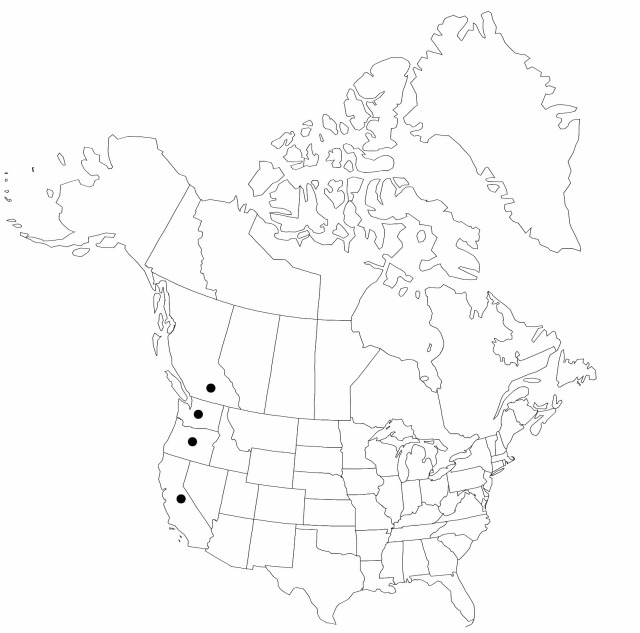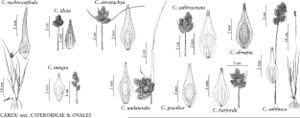Carex unilateralis
Erythea 8: 43. 1922.
Plants densely cespitose. Culms 35–75 cm. Leaves: sheath summits U-shaped, sometimes prolonged to 2 mm beyond collar; distal ligules 2.5–8 mm; blades 3–5 per fertile culm; 15–45 cm × 2–3(–4) mm. Inflorescences ascending, dense, green to gold or brown, (1–)1.4–2.5 cm × 9–17 mm; proximal internode 1.5–4 mm; 2d internode 1–4 mm; proximal 2–3 bracts erect to ascending, leaflike, the proximal longer than inflorescence, often more than 2 mm wide, base ± surrounding culm. Spikes 5–11, ± individually indistinct, ovoid to broadly ovoid, 7–13 × 5–9 mm, base rounded to acute, apex truncate to acute. Pistillate scales pale gold to red-brown, with pale to green midstripe, lanceolate to ovate, 3.3–4.8 mm, shorter and narrower than perigynia, margin sometimes white, 0.1–0.2 mm wide, apex acuminate to awned. Perigynia ascending to ascending-spreading, green, gold, or sometimes coppery, conspicuously 0–11-veined abaxially, conspicuously 0–8-veined adaxially, ovate to lanceolate, usually flat, 3.5–5 × 1.3–1.75 mm, 0.3–0.5 mm thick, margin flat, including wing 0.2–0.3 mm wide; beak usually gold or red-brown at tip, usually flat, winged, ± ciliate-serrulate or, sometimes, cylindric, unwinged, ± entire for 0.5–0.6 mm, (1.4–)1.7–2.5 mm, abaxial suture inconspicuous or with white margin, distance from beak tip to achene. Achenes stipitate, ovate to obovate, (1.2–)1.5–1.9 × 0.75–1(–1.2) mm, 0.3–0.4 mm thick.
Phenology: Fruiting late spring–summer.
Habitat: Seasonally wet places, 0–1000 m
Distribution

B.C., Calif., Oreg., Wash.
Discussion
Carex unilateralis intergrades with C. athrostachya.
Selected References
None.
